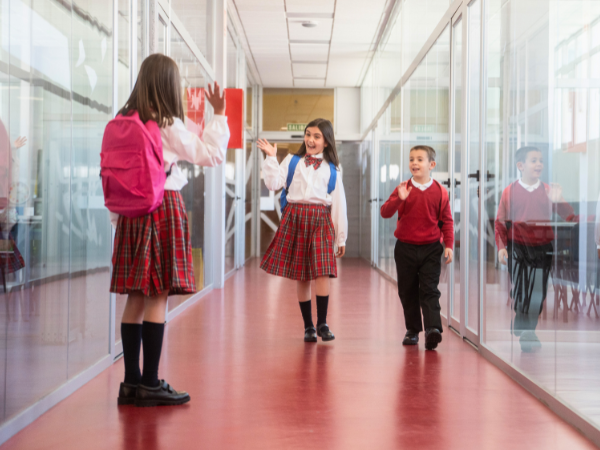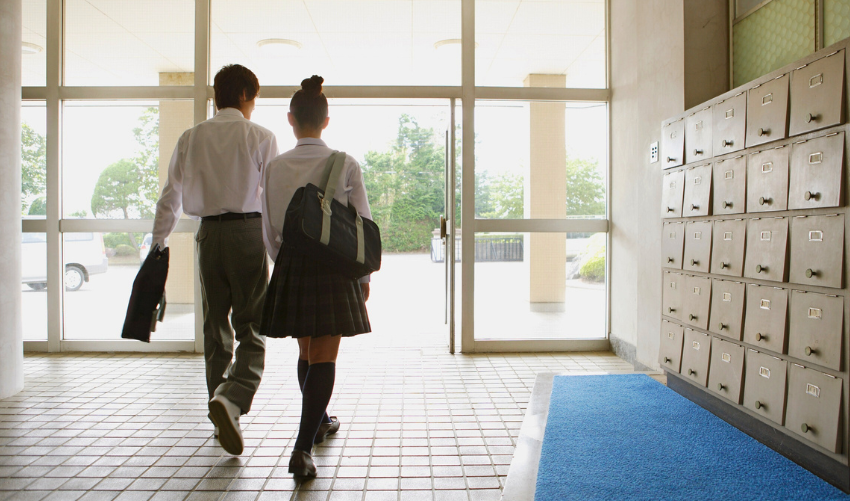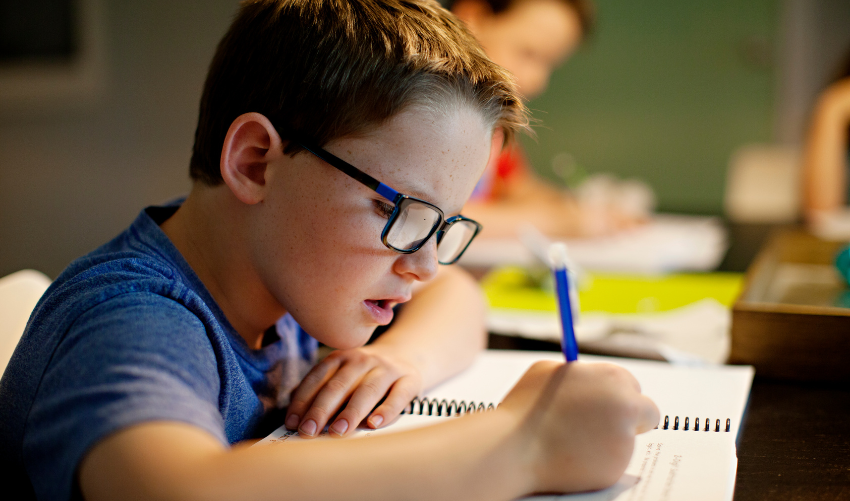Choosing the right school for your child is one of the most important decisions you’ll make as a parent. You want a place where they can thrive academically and feel safe.
This guide we’ll compare private and public schools in terms of safety. We’ll look at factors like security measures, bullying policies, and overall student well-being.
Understanding The Landscape Of School Safety
Choosing the right school is crucial for parents. The debate between private and public schools often centers on safety. This section dives into what makes a school safe.
Defining “Safe Environment” In Schools
A “safe environment” in schools involves several key elements. Parents and educators define safety in different ways. Here are the main components:
- Physical Security: Encompasses measures like controlled access, surveillance, and emergency protocols.
- Emotional & Social Well-being: Includes protection from bullying and harassment, fostering a supportive climate.
- Absence of Violence: Refers to the prevention of physical altercations, weapons, and serious incidents.
Each of these factors plays a vital role in shaping a safe school environment. Schools must address these concerns effectively.
Why School Safety Is A Top Concern For Parents
School safety is a significant concern for parents today. Parents want to know their children are safe while at school. Many factors contribute to this worry:
- Student Well-being: Directly influences a child’s ability to learn.
- Academic Performance: A safe environment reduces stress and allows students to focus on education.
- Trust and Confidence: Parents seek reassurance that their children are protected while at school.
Many parents will choose schools based on safety records. They look for schools with strong security protocols. Surveys show that parents prioritize schools with:
- Controlled access points.
- Active surveillance systems.
- Programs to prevent bullying and harassment.
Parents’ concerns drive schools to improve safety measures. A strong focus on safety helps build trust. This trust allows students and parents to feel secure in their school environment.
Safety In Public Schools: Challenges And Comprehensive Measures
Public schools face unique challenges in ensuring safety. They must address various issues that can affect their student population.
Factors Influencing Public School Safety
Public school safety is influenced by various factors. The following elements play a significant role:
- Student Population Size: Often larger enrollments can pose unique supervision and management challenges.
- Diverse Demographics: Schools reflect broader community issues, including socio-economic factors and crime rates.
- Funding Variances: Safety resources can differ significantly based on district budgets and priorities.
The size of the student body creates a complex environment. More students mean more potential risks. This can lead to difficulties in monitoring behavior and ensuring safety.
The budget is another critical factor. Schools with less funding may struggle to implement necessary safety measures. Limited resources can lead to inadequate safety protocols and training.
Public School Safety Initiatives
Public schools implement various safety initiatives to protect students. These programs are essential for creating a secure environment:
- Extensive Emergency Protocols: Drills for lockdowns, active shooters, and natural disasters are standard.
- Resource Officers (SROs): Dedicated law enforcement presence helps maintain order and respond to threats.
- Anti-Bullying Programs: Comprehensive programs address and prevent bullying behavior.
- Mental Health Support: Growing emphasis on providing counseling and support services to students.
Emergency protocols are vital. Regular drills prepare students and staff for various situations. Resource Officers, or SROs, play a key role in school safety. Their presence deters crime and provides immediate response capabilities.
Safety In Private Schools: Perceived Advantages And Unique Considerations
Private schools often market themselves as safer places. They promise more personalized attention and a strong community. But are these claims always true?

Private School Safety Attributes
Private schools often highlight several safety attributes that appeal to parents. These features may create a sense of security for students. Below are some key attributes:
- Smaller Class Sizes & Enrollment: Smaller classes allow for more personalized supervision. Teachers can quickly identify issues.
- Controlled Entry & Exit: Many private schools have stricter visitor policies. Gated campuses limit unauthorized access.
- Stronger Community Bonds: A tighter-knit community fosters a sense of collective responsibility. Parents and staff work together for student safety.
These attributes can make private schools seem safer. They create an environment where students feel more secure. Parents often report feeling confident in these settings.
Private School Safety Challenges & Nuances
Despite their advantages, private schools face unique safety challenges. Understanding these nuances is vital. Here are some considerations:
- Less Public Scrutiny: Private schools may have less external oversight. This can lead to insufficient safety protocols.
- Resource Limitations: Smaller private schools might have fewer resources. They may lack advanced security technology or specialized staff.
- Addressing Internal Issues: Issues like bullying can still occur. Effective internal policies are necessary to manage these situations.
These challenges highlight the complexity of safety in private schools. Parents must weigh the perceived advantages against potential pitfalls. Making informed choices requires careful consideration of both sides.
Factors Beyond School Type: What Truly Influences Safety
When discussing school safety, people often think about public versus private institutions. However, the type of school is not the only factor that determines safety. Factors beyond school type play a crucial role in ensuring a safe environment for students.
Community Environment
The community surrounding a school greatly influences its safety. Neighborhood crime rates can significantly impact a school’s overall security. A school located in a high-crime area may face unique challenges. Here are some key factors:
- Neighborhood Crime Rates: A higher crime rate can lead to increased anxiety among parents and students.
- Community Engagement: Strong parent and community involvement can enhance school safety efforts.
- Socio-Economic Factors: Economic stability and social support systems in the community play a role.
Engaged communities often create safer environments. Schools that collaborate with local organizations can share resources and information. This partnership can lead to improved safety measures and create a sense of belonging for students.
School Culture And Policies
School culture affects safety just as much as the physical environment. A positive school culture promotes respect and responsibility among students. Clear behavioral expectations are vital. They help in creating a structured environment.
| Policy Type | Description |
|---|---|
| Clear Behavioral Expectations | Well-defined and consistently enforced codes of conduct reduce incidents. |
| Reporting Mechanisms | Anonymous reporting systems encourage students to speak up about concerns. |
| Proactive Interventions | Early identification and support for students exhibiting challenging behaviors. |
Schools that have strong policies can create a safer atmosphere. Staff and students understand what behaviors are unacceptable. This clarity helps prevent issues before they escalate.
Staff Training And Preparedness
Well-trained staff is essential for school safety. Regular emergency response training prepares staff for various crises. This training ensures that everyone knows their role during emergencies.
- Emergency Response Training: Regular drills and training for all staff on handling various crises.
- Conflict Resolution Skills: Equipping staff to de-escalate situations and manage interpersonal conflicts.
- Mental Health Awareness: Training staff to recognize and respond to student mental health needs.
Staff members who are trained can respond effectively to emergencies. They can also support students in need. This proactive approach can enhance the overall safety of the school environment.
Making An Informed Decision: Evaluating School Safety
Understanding the differences in security measures, policies, and overall environment is essential. This guide provides clear steps to assess school safety effectively.
Questions To Ask Potential Schools
When considering schools, asking the right questions is crucial. Questions help you understand how a school prioritizes safety. Here are key areas to focus on:
- Security Measures: Inquire about entry systems, cameras, School Resource Officers (SROs), and visitor policies.
- Bullying & Discipline Policies: Understand how the school addresses and prevents bullying. Learn how they handle disciplinary actions.
- Emergency Preparedness: Ask about drill frequency, communication protocols, and reunification plans during emergencies.
Use the table below to organize your questions:
| Area of Inquiry | Key Questions |
|---|---|
| Security Measures | What security systems are in place? |
| Bullying Policies | How does the school handle bullying? |
| Emergency Plans | What are the emergency drill procedures? |
These questions guide you to evaluate the safety features of each school. Be clear and direct in your inquiries. This helps you gather important information and insights.
Visiting And Observing
Visiting schools helps you see their safety measures in action. During your visit, pay attention to several key factors:
- Campus Tour: Observe the overall atmosphere. Is the school clean? Are there visible security measures?
- Observe Interactions: Watch how students and staff interact. Look for signs of a positive and respectful environment.
- Speak to Parents & Staff: Gather insights from current families and school personnel. Their safety perceptions are valuable.
During your tour, take notes on your observations. This will help you compare schools later. Look for signs of a welcoming environment. A safe school promotes trust and respect among students and staff.





Leave a Reply